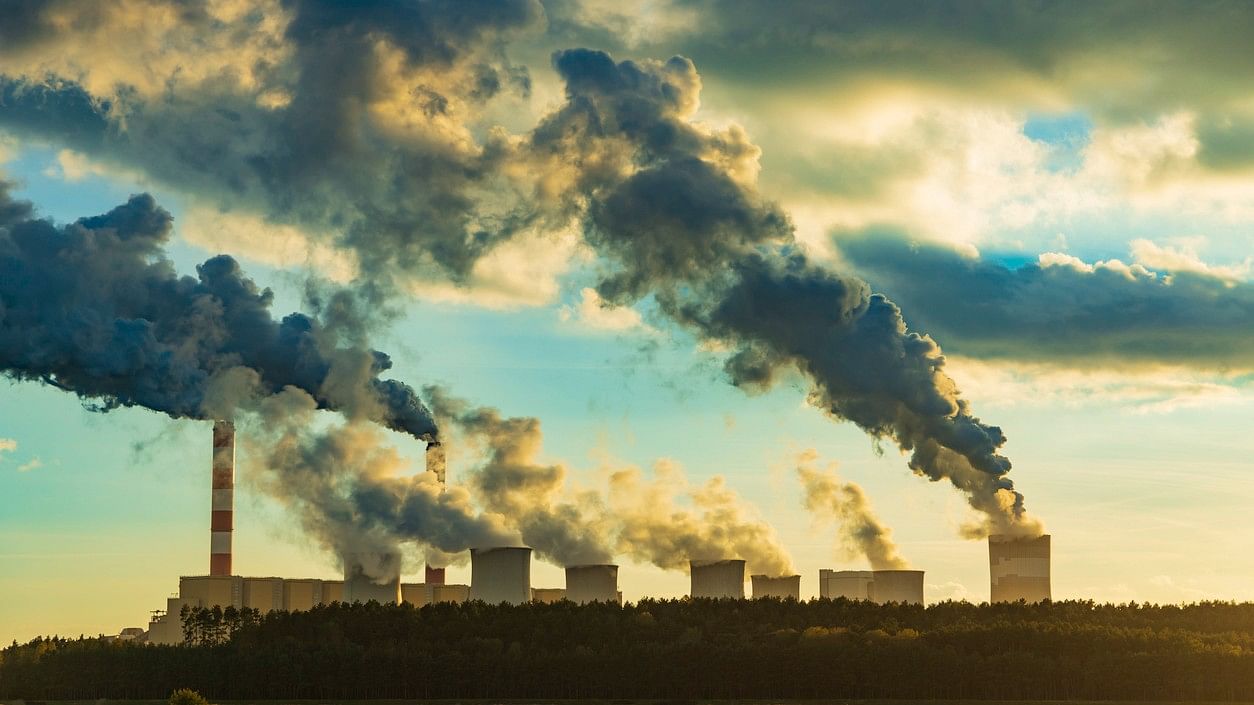
Representative image of fumes emanating from factory
Credit: iStock Photo
New Delhi: India has reduced the emission intensity of its GDP by 33 per cent between 2005 and 2019, according to the country’s third National Communication that has been approved by the Union Cabinet and will soon be submitted to the UN.
Submission of such documents is obligatory for India because of being a party to the UN Framework Convention on Climate Change (UNFCCC) and the Paris Agreement. The first two National Communications were presented to the UN in 2004 and 2012.
According to the latest one, India’s GDP between 2005 to 2019 expanded with a cumulative annual growth rate of nearly 7 per cent, whereas the emissions grew at a CAGR of about 4 per cent, suggesting the rate of emission increase is lower than the rate of GDP growth.
“This shows India has successfully decoupled its economic growth from greenhouse gas emissions, lowering the emission intensity of its GDP by 33 per cent between 2005 and 2019,” environment ministry sources said on Saturday, adding that the Union Cabinet cleared the document for submission.
“We have achieved 11 years in advance of our original target of reducing the emission intensity by 33-35 per cent over 2005 level by 2030,” said a senior official. The target has already revised further to lower the emission intensity by 45 per cent by 2030, over the 2005 level.
Also India’s share of non-fossil sources based installed capacity of electricity generation in 2023 is more than 41 per cent.
This means accomplishing the second voluntary emission cut target of 40 per cent cumulative electrical power installed capacity from non-fossil fuel-based energy sources in 2021 – nine years in advance of the target date of 2030.
Both achievements were flagged by Prime Minister Narendra Modi when he addressed the high-level segment at the UN Climate Change Summit (COP28) in Dubai on Friday.
During 2005 to 2019, an additional carbon sink of 1.97 billion tonnes of carbon dioxide equivalent had been created, sources said, noting the country was on track to achieve the target of creating an additional carbon sink of 2.5 to 3 billion tonnes through tree and forest cover by 2030.
The Union government has launched a “green credit” scheme for turning degraded land, waste land and community land into forest. The scheme will allow corporations to create such forests and take “green credits” that can be traded in the international market. “The rules for the scheme are being framed now,” said an official.
The 3rd National Communication report, prepared on the basis of 87 scientific studies and inputs from 27 ministries, uses the GHG emission data up to 2019. The energy sector contributed the most to the overall anthropogenic emissions (75.81 per cent), followed by agriculture (13.44 per cent), industrial process and product use (8.41 per cent) and waste (2.34 per cent).
Besides the two previous National Communication reports, India had earlier submitted a Biennial Update Report in 2021 (with GHG inventory of 2016) and Long-Term Low Emission Development Strategy at COP27 in 2022.
